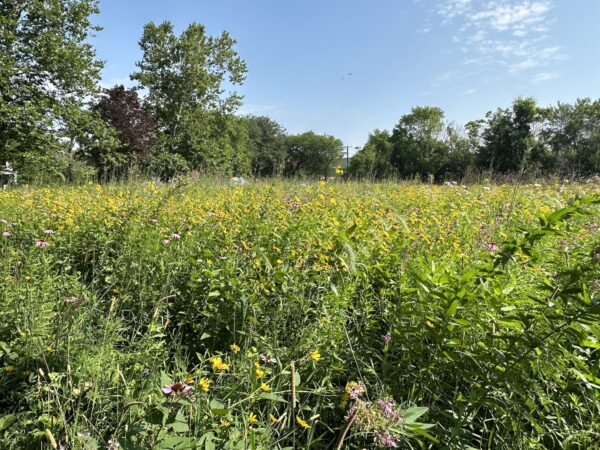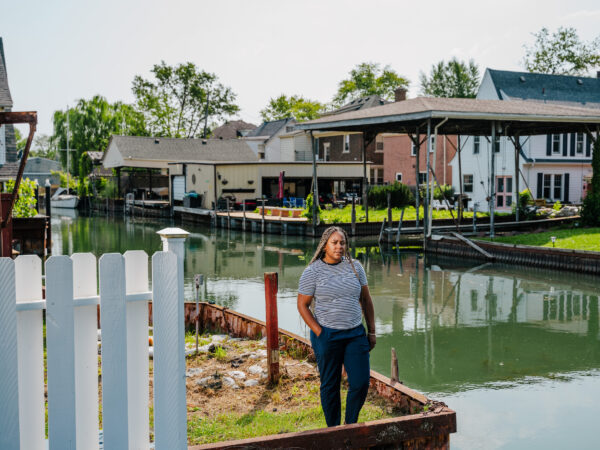Toward the end of 2023, I was newly unemployed and living by myself for the first time.
In between jobs, searching for employment and a means of fulfillment and community, I began to reflect on how my mom got into gardening. In the dead of winter, memories of childhood summers spent pulling weeds, tilling soil and fleeing the occasional garter snake alongside her began to color my mind.
At the behest of a friend, who spotted my loneliness a mile away, she suggested I volunteer at my nearest urban farm. Up until that point, I had been living in Detroit for three years, but struggling to build community or develop hobbies outside of my work life as a news reporter.
So much has been said in recent years about our collective need for third places, spaces for gathering and community outside of work or home, particularly in light of increased social isolation during the COVID-19 pandemic.
I had never considered that gardening, the beloved pastime of people like my mother or the enclave of immigrants I grew up in, could be a step toward belonging. But nationally, the number of applications for gardens across U.S. cities has grown year after year since 2018, according to a 2024 study published in Urban Forestry & Urban Greening.
In search of my mother’s garden
When my family arrived in the United States in the late 1980s, they replaced the red clay of rural Kenya for the tuff loam of New England’s hill towns.
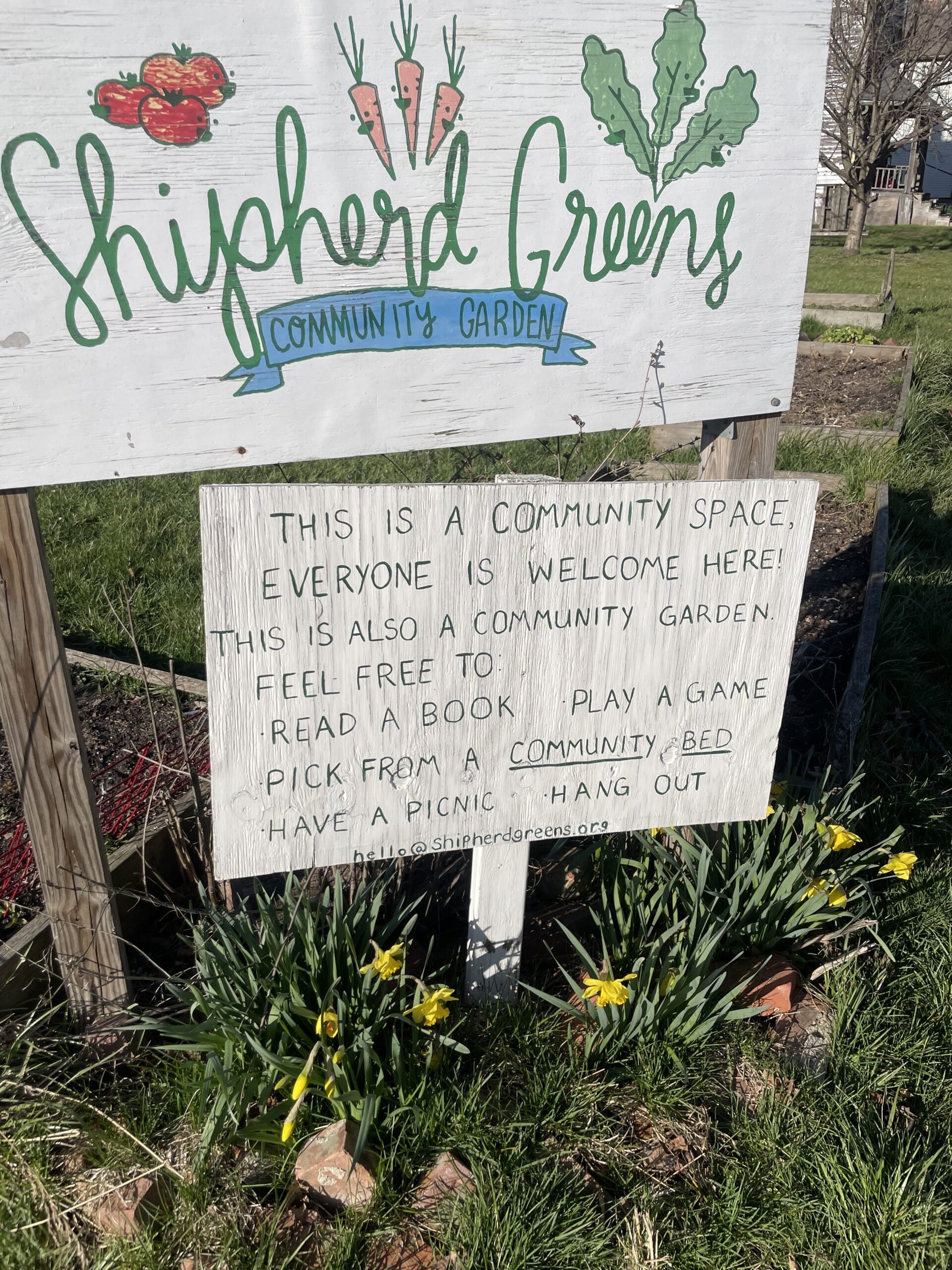
Welcome sign at Shipherd Greens Community Garden in Detroit, my neighborhood community garden. (Photo by Ethan Bakuli)
Pinged with homesickness, estrangement in a new country, and a need for something to do, my mother, Florence, spotted a plot of land adjacent to the university housing my parents and three older brothers lived in when they first settled. That plot of land had already been morphed into a community garden frequented by Black Southern migrants, Southeast Asian refugees, and “counterurbanites.”
By the time I was born, she was a full-fledged master gardener, growing on her connection with other immigrants across Massachusetts and Connecticut who welcomed the opportunity to buy some of her African leafy greens like managu (mah-NAH-goo) or saget (sah-GET).
When I recently spoke with Katherine Alaimo, a nutritional epidemiologist and professor at Michigan State University, she told me about her research into the “gardening triad,” or the social, emotional, and psychological benefits people gain from not only tending to their gardens, but doing so in community with others.
It seemed like my mother’s experiences were reflective of the agency folks have in nature. Despite growing up around subsistence farmers in her youth, my mom didn’t have much of a green thumb. But expected to assimilate, she found a way to keep a hold on her traditional footways by joining a community garden.
Where the sidewalk ends, the garden begins
Urban gardening has been a part of Detroit since the late 19th century, but it saw increased interest in the mid-1970s under then-Mayor Coleman Young, who launched the “Farm-A-Lot” program as a means of supporting Detroiters’ ability to grow their food in the middle of an economic recession felt across the city. Now, the city boasts over 2,500 urban farms and gardens, according to a 2024 report from Keep Growing Detroit.
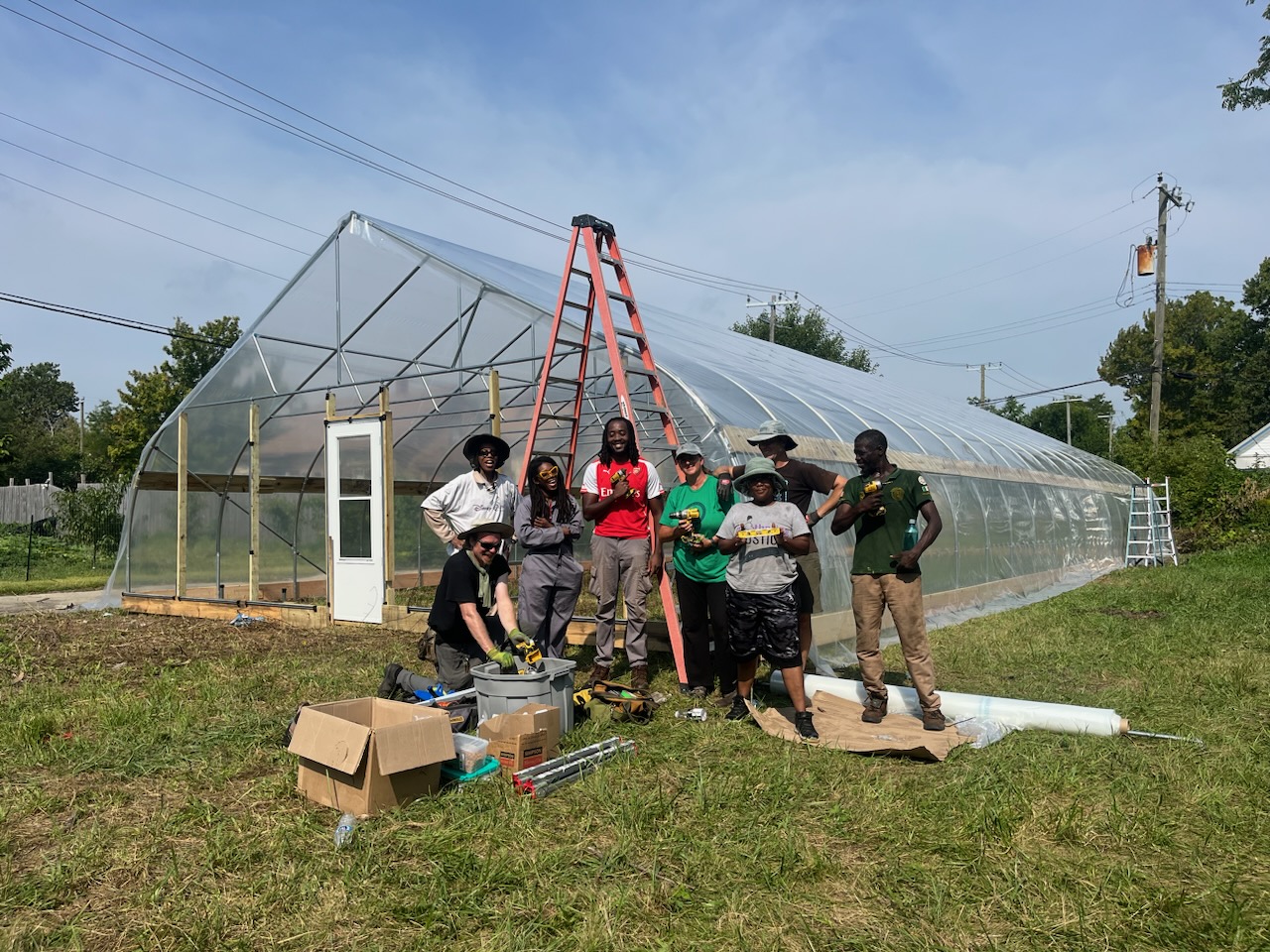
This past summer, the Keep Growing Detroit Build Crew and I constructed a hoop house in Highland Park. I’m the one in the red t-shirt. (Photo courtesy of Ethan Bakuli)
Keep Growing Detroit is among them. I started attending their volunteer hours last spring, and was surprised to find a 1.5-acre farm not too far from downtown. Through its programming, from workshops on container gardening to plant distributions and seed-packing events, Keep Growing Detroit, or KGD, has annually invited thousands of metro Detroit residents to get into gardening.
It’s where I met Monzella James, “Ms. M,” as she encouraged me to call her when we first met. This past summer, she and I were a part of Build Crew: a summer-long program run through KGD that trains amateur builders to construct rain catchment systems and hoop houses for urban farmers across Detroit. It’s part of a broader vision to provide year-round infrastructure for new and longtime growers and farmers.
After tending to her aging mother for over two decades, Ms. M, age 68, said joining the Build Crew was a way to step out of the house and “connect with people.”
“I was just ready to meet new people and do something physically,” she said. “I like building, and I like gardening. I’m not sure I fully understood how that would pair together, but I was definitely ready and willing to find out.”
But gardening isn’t just a means of self-sufficiency or personal well-being, Alaimo told me, it can also expand access to healthy produce, become a tool for political organizing, or reimagine vacant lots as community hubs.
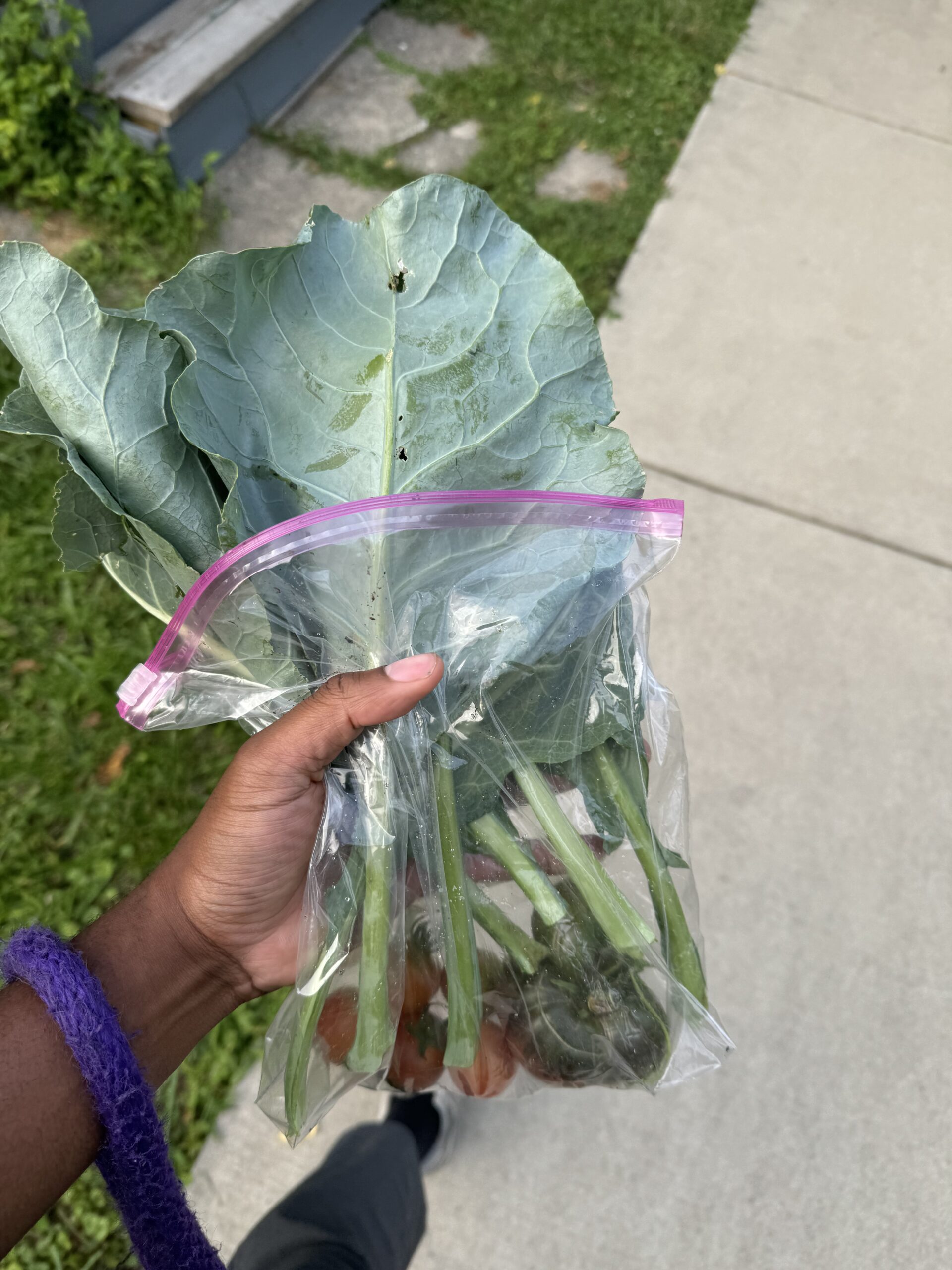
I went home with a tiny bundle of collard greens from a raised garden bed I share with neighbors. (Photo by Ethan Bakuli)
“The struggles that Midwestern cities have faced over the past 30 or more years due to the disinvestment by corporations like the car companies and then the funneling of resources out to the counties has meant that there is this abundance of land, and so seeing that land as a resource for growing food is something that Detroit has been a main leader in worldwide.”
That struck a chord with a conversation I had with Rukiya “ru” Colvin, a Detroit abolitionist, community organizer, and writer.
Colvin has spent the last several years building out a vision for a space that can help people “connect and develop and grow together and become more self-sufficient together.” Influenced by childhood memories of time spent in their grandmother’s garden, readings by Octavia Butler and Grace Lee Boggs, and a healthy amount of “spite and despite” toward city developers like Dan Gilbert.
Set to launch later this month, “Alma St. Garden” is a community garden and gathering space on the east side of Detroit, located on the same street Colvin’s family grew up on and adjacent to the Denby neighborhood. I got a chance to befriend Colvin through open volunteer hours they hosted to clear trash and abandoned furniture in the vacant lot that will now house the garden.
“There’s still no desire from the city to repair the harm that came from the bankruptcy and the foreclosure and all of the ways that erasure has happened for this neighborhood and similar neighborhoods,” Colvin said.
What’s excited them the most during this process of getting the community garden off the ground is connecting with longtime residents as they door-knocked to gauge people’s interest in a gathering space in the neighborhood.
“This is a space that people want, and they want to see food grown,” Colvin said.
“Hearing that a guy with little kids was like ‘oh yeah, we got something to do,” they said. We can come down here now. And hearing elders saying, like, they just want places to sit and enjoy nature.”
Man at the (community) garden
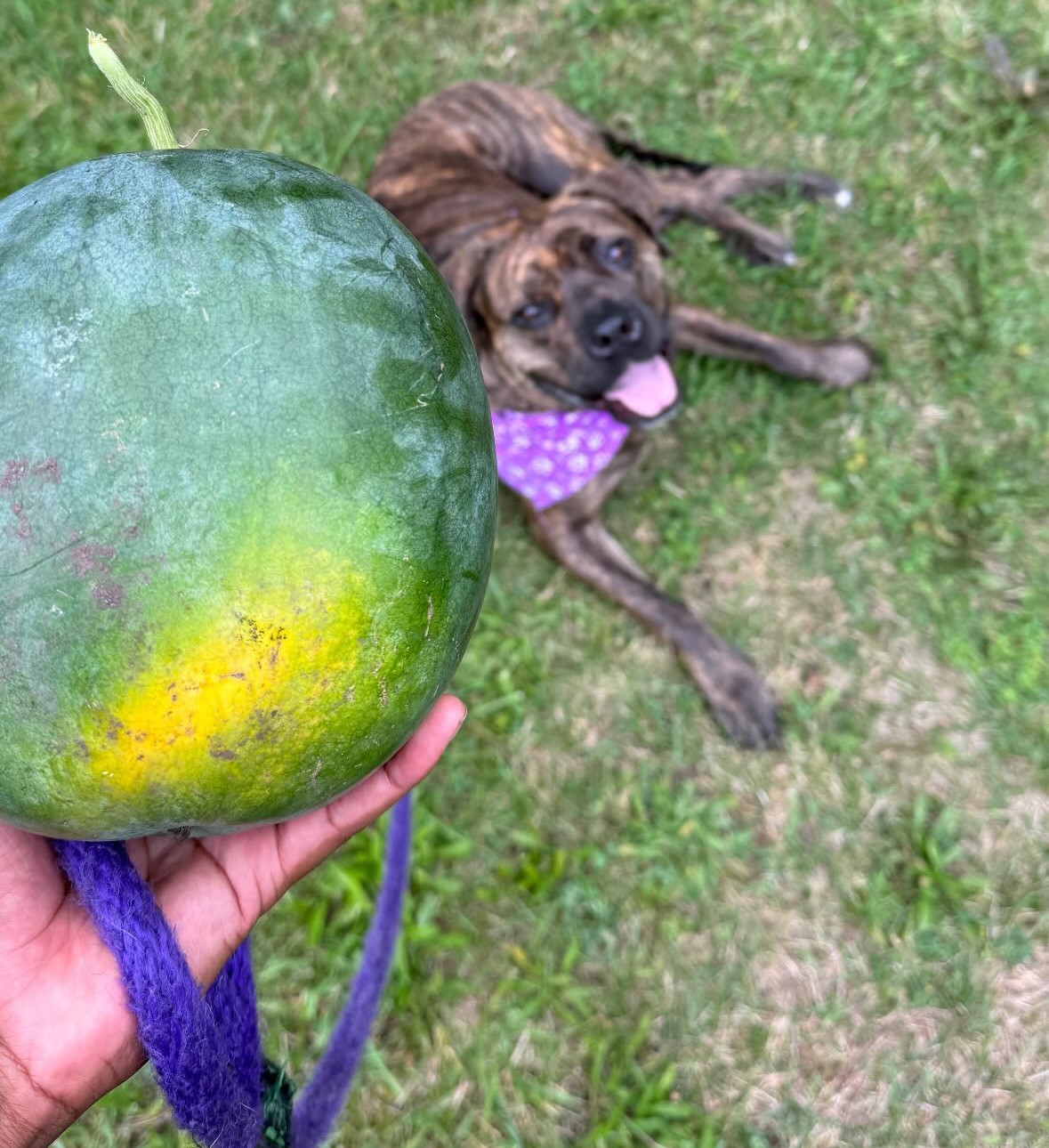
My dog, Bertie, was happy with my first attempt at growing watermelon. (Photo by Ethan Bakuli)
Between ru and Ms. M, both believe in gardening’s capacity to bring people together in these times. “We need to be reminded of certain things, and we have gotten so far away from being community oriented…hard times bring people together,” James said. “I don’t know how hard times are going to become but they may be extremely hard for some people.”
Denby, like other neighborhoods across Detroit, was heavily impacted by disinvestment and tax foreclosure, contributing to blight and vacancy.
“More of us are realizing that we are living in some pretty dystopian times, so trying to figure out what it means to be more self-sufficient through food is one of the most immediate ways of thinking about that,” Colvin said.
By no means is gardening a panacea or cure-all for all the world’s problems. But for the people I’ve connected with, it’s been a catalyst for change and fellowship amid personal, social, and economic upheaval.
Catch more news at Great Lakes Now:
Composting, water access and backyard chickens: Detroit’s urban farming evolution
Great Lakes Moment: Creating a green oasis in southwest Detroit
Featured image: A tray of green bell peppers also harvested during Keep Growind Detroit’s weekly volunteer hours. (Photo by Ethan Bakuli)



